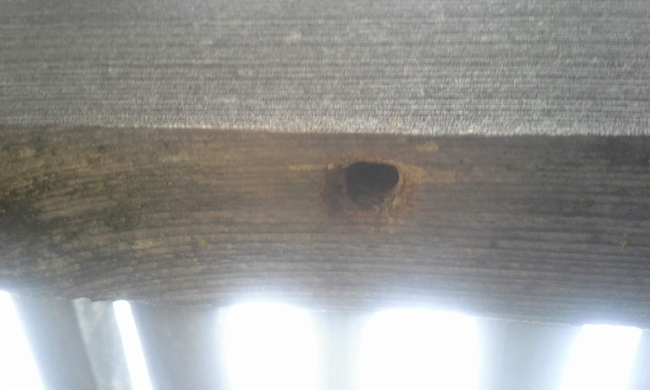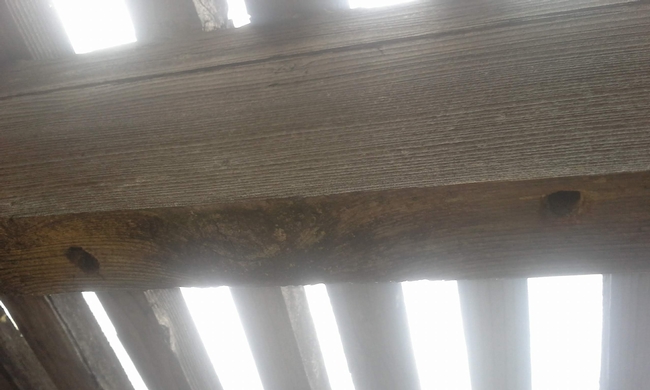Melody Kendall
As a child, a bee sighting was usually accompanied by a lot of screaming and general chaos. As I matured bees were given a wide berth and usually avoided. When raising our family we removed any and all plants that attract bees, something that I have come to regret as a more educated and seasoned UC Master Gardener.
About twenty years ago we noticed large black bees congregating around our wooden pergola. Closer inspection showed bees entering and exiting holes that had been neatly drilled into the support beams. My husband was not amused. Having been recently enlightened about bees and pollinators in general I suggested a cautious approach instead of wholesale slaughter of them. We took one of the bees that had died of natural causes to the Napa County Agricultural Commissioner's office and asked them about the cause and future progress of this infestation. The Ag Commissioner's office staff provided us with information and suggestions. Basically, the bees are benign but would continue to ‘drill' holes. It was suggested that we fill the holes and paint the support beams.
Carpenter bee next to a quarter
No more than 4 holes per beam
Since we noticed their living arrangements we have done nothing to curtail the carpenter bees in our yard and, in those twenty years they have not excavated any additional holes in our pergola. The bees continue to buzz quite loudly during the summer, pollinating the garden and bringing home food to their nests. In the winter months they quietly sleep in their snug tunnels. The only downside to their chosen habitat is the bee ‘frass' left on the deck furniture. In my opinion it's a perfect cohabitational living arrangement considering all of the Carpenter Bee's wonderful beneficial attributes.
Information links:
UC IPM http://ipm.ucanr.edu/PMG/PESTNOTES/pn7417.html
UC News about Entomology and Nematology
https://ucanr.edu/blogs/entomology/index.cfm?tagname=carpenter%20bees
Napa Master Gardeners are available to answer garden questions by email: mastergardeners@countyofnapa.org. or phone at 707-253-4143. Volunteers will get back to you after they research answers to your questions.
Visit our website: napamg.ucanr.edu to find answers to all of your horticultural questions.
Photo credits: Mel Kendall


